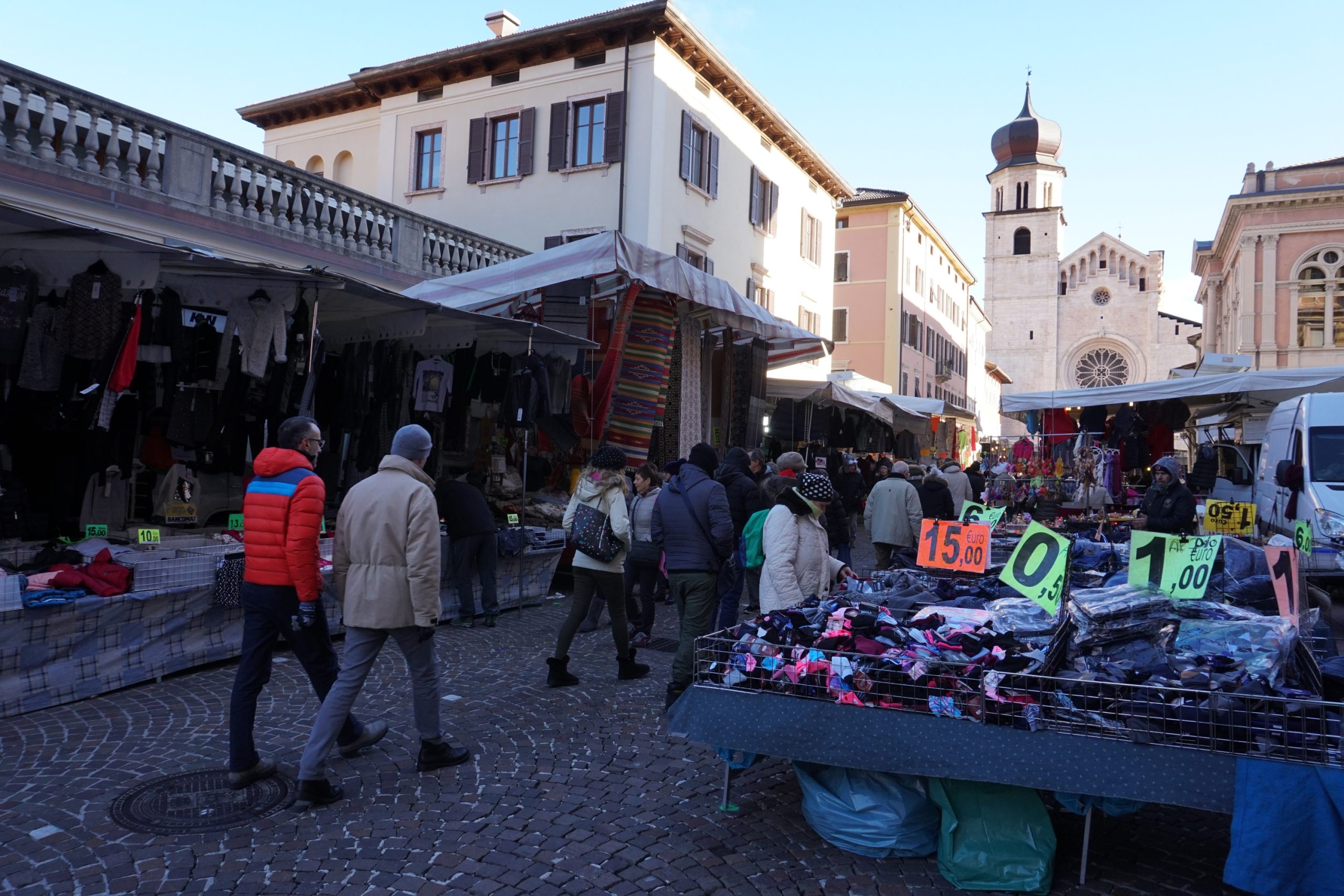Imagine launching your latest product in Europe, only to find out it flops in France but thrives in Germany. What went wrong?
The European market is as diverse as its history, with each country presenting unique challenges and opportunities for businesses.
Understanding the nuanced purchasing habits and preferences of European consumers is essential for tailoring effective marketing strategies.
This article delves into the key factors that influence European consumer behavior, regional differences, and actionable insights for entrepreneurs, ensuring your product resonates with your target audience across the continent.
The Diverse European Market

The Cultural Mosaic
Europe is a tapestry of cultures, each with its customs, traditions, and values. This cultural diversity significantly impacts consumer behavior, influencing everything from brand perception to purchasing decisions.
For instance, while Italians might prioritize fashion and aesthetics, emphasizing stylish branding, the British may lean towards practicality and quality.
Understanding these cultural nuances is crucial for business owners aiming to expand to this region and marketers aiming to create resonant and effective campaigns.
Economic Variations
Economic conditions across Europe vary widely, affecting purchasing power and consumer preferences. In affluent countries like Germany and Switzerland, consumers often have higher disposable incomes, allowing them to prioritize quality and premium brands.
In contrast, in countries with more modest economies, such as Greece or Portugal, consumers may be more price-sensitive, seeking value for money and affordable options.
Business owners expanding to the EU region must adapt their strategies to align with the economic realities of each market, ensuring their products meet the financial expectations of their target audiences.
Regulatory Environment
The regulatory landscape in Europe is shaped by both European Union regulations and country-specific laws.
The EU enforces strict guidelines on product safety, data protection, and environmental standards, which can influence consumer trust and preferences.
Additionally, each country may have its regulations affecting advertising, product labeling, and consumer rights.
For example, the General Data Protection Regulation (GDPR) has heightened consumer awareness about data privacy, impacting how businesses collect and use consumer data.
Understanding and complying with these regulations is essential for building consumer trust and avoiding legal pitfalls in different European markets.
Key Factors Influencing European Consumer Behavior
Cultural Influences
Case Study: Cultural Festivals and Traditions
Cultural festivals and traditions significantly affect purchasing decisions in various European countries. For instance, in Spain, the festival of La Tomatina drives a surge in tomato purchases and related festivities.
Similarly, Germany’s Oktoberfest leads to increased sales of beer, traditional Bavarian clothing, and festive paraphernalia. Understanding these cultural events allows marketers to tailor their promotions and product offerings to align with local celebrations, enhancing relevance and appeal.
Brand Perception
Cultural identity plays a vital role in shaping brand loyalty and preferences. In Italy, where fashion and craftsmanship are highly valued, brands like Gucci and Prada enjoy strong loyalty due to their alignment with Italian cultural values of style and quality.
In contrast, Scandinavian consumers may prefer brands that emphasize simplicity, functionality, and sustainability, such as IKEA or H&M. Business owners must align their brand messaging with the cultural values and identities of their target markets to foster brand loyalty.
Technological Adoption
Digital Shopping Trends
The rise of e-commerce and mobile shopping has transformed consumer behavior across Europe. Countries like the UK and Germany lead in online shopping, with a significant portion of retail sales occurring through digital channels.
In these markets, consumers expect seamless online shopping experiences, fast delivery, and easy returns. Analyzing these trends helps businesses optimize their online presence and adapt to the digital preferences of European consumers.
Tech-Savvy Consumers
European consumers are increasingly tech-savvy, with social media and online reviews playing a crucial role in influencing purchasing decisions.
Platforms like Instagram and TikTok are popular for discovering new products, while websites like Trustpilot provide trusted reviews that can sway consumer choices.
Business owners need to leverage these platforms for advertising, influencer partnerships, and engaging content to effectively reach and persuade tech-savvy European consumers.
Sustainability and Ethics
Green Consumerism
Sustainability is becoming a significant factor in purchasing decisions for many European consumers. Countries like Sweden and Germany are at the forefront of green consumerism, with a high demand for eco-friendly and sustainable products.
Brands that prioritize sustainability in their product design, packaging, and business practices can attract environmentally conscious consumers and gain a competitive edge in these markets.
Ethical Brands
Ethical considerations, such as fair trade, cruelty-free products, and social responsibility, are increasingly important to European consumers.
In countries like the Netherlands and the UK, consumers are willing to pay a premium for products that align with their ethical values.
Brands that demonstrate transparency, ethical sourcing, and a commitment to social and environmental causes can build stronger relationships with consumers who prioritize these values.
Regional Differences in Consumer Behavior

Northern Europe: Focus on Quality and Sustainability
Consumers in Northern European countries such as Sweden and Denmark place a high emphasis on quality and sustainability. They are willing to pay a premium for products that are durable, well-crafted, and environmentally friendly.
This preference is driven by a strong cultural emphasis on sustainability, ethical consumption, and a high standard of living.
For instance, the popularity of electric vehicles and organic food products is particularly high in these regions, reflecting the consumers’ commitment to eco-friendly and sustainable living.
Case Study: IKEA’s Sustainability Campaign
IKEA’s “People & Planet Positive” initiative has been a significant success in Northern Europe. The campaign focuses on sustainable living by offering affordable, eco-friendly products and promoting renewable energy and recycling.
By aligning its brand with the values of quality and sustainability, IKEA has strengthened its market position in Northern Europe, resonating with consumers’ preferences and enhancing brand loyalty.
Southern Europe: Price Sensitivity and Tradition
In Southern European countries like Spain and Italy, consumers tend to be more price-sensitive and value traditions highly.
Economic conditions and cultural factors contribute to a preference for cost-effective products that align with traditional values and lifestyles. Family-owned businesses and locally-produced goods often enjoy strong support, as they represent continuity and heritage.
Case Study: Barilla’s Success in Italy
Barilla, the iconic Italian pasta brand, has successfully leveraged its alignment with Italian culinary traditions.
By emphasizing its commitment to traditional pasta-making techniques and using high-quality, locally sourced ingredients, Barilla has maintained a strong market presence in Italy.
Its products resonate deeply with Italian consumers’ love for traditional, family-oriented meals, ensuring continued loyalty and preference.
Eastern Europe: Emerging Markets and Brand Aspirations
Consumers in Eastern European countries such as Poland and Hungary are characterized by their aspirations towards Western brands and innovations.
As these markets continue to grow economically, there is an increasing demand for products that signify modernity, status, and advanced technology. Western brands often symbolize quality and prestige, appealing to the emerging middle class.
Case Study: Xiaomi’s Popularity in Poland
Xiaomi, the Chinese electronics brand, has gained significant traction in Poland by offering high-quality smartphones and gadgets at competitive prices.
The brand’s marketing strategy, which highlights cutting-edge technology and value for money, has appealed to Polish consumers who aspire to own advanced and stylish tech products without breaking the bank.
Xiaomi’s success in Poland underscores the region’s growing appetite for innovation and brand prestige.
Western Europe: Brand Loyalty and Innovation
In Western European countries like Germany and France, consumers exhibit high levels of brand loyalty and openness to innovation.
These markets are characterized by mature economies and sophisticated consumers who appreciate quality, reliability, and innovative features in products. Established brands that consistently deliver on these aspects often enjoy strong loyalty and repeat business.
Case Study: Apple’s Marketing Strategy in Germany
Apple’s marketing strategy in Germany has been notably successful due to its focus on innovation and quality.
By continuously introducing cutting-edge technology and maintaining a premium brand image, Apple has cultivated a loyal customer base in Germany.
Its marketing campaigns emphasize the superior design, functionality, and ecosystem of its products, aligning with German consumers’ preferences for high-quality and innovative tech solutions.
Actionable Insights for Business Owners Expanding to Europe

Tailored Marketing Strategies
Localized Campaigns
Creating localized marketing campaigns is essential to resonate with specific regional audiences in Europe. Each country has its own unique cultural, economic, and social nuances that influence consumer behavior.
For example, a marketing campaign in France might emphasize elegance and sophistication, aligning with the French appreciation for style and refinement. In contrast, a campaign in Germany might focus on precision and quality, reflecting the German value of engineering excellence.
By tailoring campaigns to the local context, business owners can create more impactful and relevant messages that connect with consumers on a deeper level.
Cultural Sensitivity
Cultural sensitivity is crucial when crafting marketing messages and product offerings for European markets. This involves understanding and respecting the cultural norms, values, and traditions of each region.
For instance, in Italy, where family and tradition are central, marketing messages that highlight family values and traditional craftsmanship can be particularly effective.
Similarly, in Scandinavian countries, where there is a strong emphasis on equality and sustainability, brands that promote eco-friendly practices and social responsibility are likely to resonate more.
Business owners must ensure their strategies are culturally appropriate to avoid missteps and build positive brand associations.
Data-Driven Decisions
Consumer Analytics
Using data analytics to understand consumer behavior and predict trends is vital for successful marketing in Europe. Consumer analytics can provide insights into purchasing patterns, preferences, and emerging trends, allowing marketers to make informed decisions.
By analyzing data from various sources, such as online behavior, sales data, and social media interactions, businesses can identify key market segments, optimize product offerings, and refine marketing strategies. This data-driven approach enables marketers to anticipate consumer needs and stay ahead of the competition.
Personalization
Personalized marketing is highly effective in engaging European consumers. By leveraging consumer data, brands can create tailored experiences that address individual preferences and needs.
Personalization can take many forms, from personalized email marketing campaigns and product recommendations to targeted advertisements and customized content.
For example, using a consumer’s browsing history to suggest products they might be interested in can significantly enhance their shopping experience and increase conversion rates. Personalized marketing not only improves customer satisfaction but also fosters loyalty and repeat business.
Sustainability Focus
Eco-Friendly Products
Incorporating sustainability into product development and marketing strategies is increasingly important in Europe, where consumers are becoming more environmentally conscious.
Brands that offer eco-friendly products and adopt sustainable practices can attract a growing segment of green consumers. This can include using recyclable packaging, sourcing sustainable materials, and promoting energy-efficient products.
Highlighting these efforts in marketing campaigns can enhance brand reputation and appeal to environmentally aware customers.
Transparency
Transparency in business practices is essential for building trust with European consumers. This involves being open about product sourcing, manufacturing processes, and corporate social responsibility initiatives.
Brands that communicate their commitment to ethical practices, such as fair trade, labor rights, and environmental protection, can gain consumer trust and loyalty.
For example, providing detailed information about the supply chain and the sustainability efforts behind a product can reassure consumers of the brand’s integrity. Transparent business practices not only strengthen consumer trust but also differentiate brands in a competitive market.
Key Takeaways
Understanding the diverse and dynamic nature of European consumer behavior is crucial for developing effective marketing strategies. Key insights include:
- Cultural Diversity: Europe’s rich cultural mosaic significantly impacts consumer preferences and purchasing decisions. Tailoring marketing campaigns to align with regional cultural values enhances relevance and engagement.
- Economic Variations: Economic conditions across Europe vary, influencing purchasing power and price sensitivity. Adapting strategies to fit the economic realities of each market ensures products meet consumer expectations.
- Regulatory Environment: Complying with European Union regulations and country-specific laws is essential for building consumer trust and avoiding legal issues.
- Technological Adoption: The rise of e-commerce and the influence of social media and online reviews are reshaping consumer behavior. Leveraging these trends is key to reaching tech-savvy consumers.
- Sustainability and Ethics: European consumers increasingly prioritize sustainability and ethical practices. Brands that emphasize eco-friendly products and transparent business practices can build stronger consumer relationships.
The future of European consumer behavior will likely see continued growth in digital and mobile shopping, with an increasing emphasis on personalized and data-driven marketing. Sustainability and ethical considerations will become even more critical as consumers demand greater transparency and environmental responsibility from brands.
Additionally, the economic landscape may evolve, influencing consumer spending patterns and preferences. Marketers who stay ahead of these trends and adapt their strategies accordingly will be better positioned to succeed in the European market.






